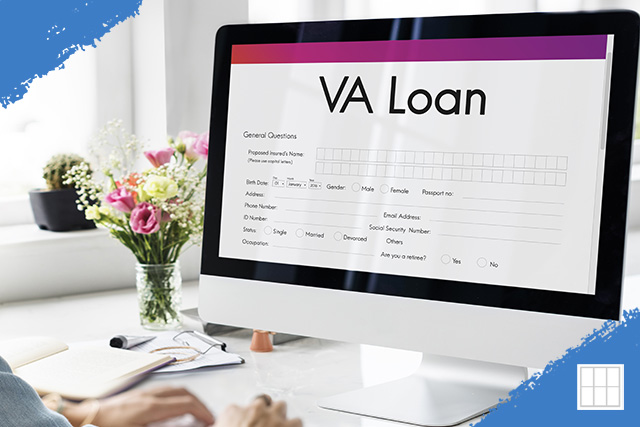When it comes to financing your home, choosing between a 15 vs 30 Year Mortgage…

Complete Guide to VA Mortgage Loans
VA mortgage loans offer a unique chance for veterans and active-duty military to own a home. With backing from the Department of Veterans Affairs (VA), these loans provide many benefits and flexible terms. This guide covers everything about VA mortgage loans, from basics to types, eligibility, and the application process.
What is a VA Loan?
A VA loan is for veterans, active-duty military, and eligible surviving spouses. It offers better terms than traditional mortgages, making homeownership easier for those who served. Private lenders, such as banks and mortgage companies, issue VA loans, but the VA guarantees them, adding security for lenders.
The Basic Process to VA Mortgage Loans
Follow key steps to obtain a VA loan. Here are the essential aspects:
Determine Eligibility: First, check if you qualify for a VA loan. Veterans with specific service durations, active-duty members, and certain surviving spouses may be eligible. Requirements vary, so confirm with the VA or a VA-approved lender.
Obtain Certificate of Eligibility (COE): Get a COE from the VA. This verifies your eligibility and specifies your entitlement amount. Obtain it online through the VA’s eBenefits portal, by mail, or via a VA-approved lender.
Find a VA-Approved Lender: With your COE, find a VA-approved lender. Compare offers to get the best terms and interest rates.
Complete the Loan Application Process: Apply for the loan, providing proof of income, employment history, credit info, and property details. The lender reviews your application and decides on approval.
VA Loan vs. Traditional Mortgages
Understanding the differences between VA loans and traditional mortgages is crucial. Key points include:
No Down Payment Requirement: VA loans often don’t require a down payment, unlike traditional mortgages needing 10%-20%.
Lower Interest Rates: VA loans usually have lower interest rates, saving money over the loan’s life.
No Private Mortgage Insurance (PMI): VA loans don’t need PMI, reducing monthly payments.
Flexible Credit Requirements: VA loans are lenient on credit scores, aiding those with less-than-perfect credit.
Streamlined Refinancing: The Interest Rate Reduction Refinance Loan (IRRRL) allows refinancing for lower rates without new appraisals or credit checks.
Types of VA Loans
VA loans cater to veterans’ and military personnel’s unique needs. The primary types are:
Purchase Loans: These enable eligible individuals to buy a home without a down payment.
Interest Rate Reduction Refinance Loan (IRRRL): This streamlines refinancing to lower interest rates and monthly payments.
Cash-out Refinance Loans: Homeowners can refinance for a higher amount to tap into home equity for various purposes.
Exploring the VA Loan
Consider these aspects when choosing a VA loan:
Occupancy Requirements: Borrowers must use the property as their primary residence, with exceptions for deployed service members.
Property Types: VA loans can buy single-family homes, condos, multi-unit properties, and manufactured homes meeting VA requirements.
Home Inspection: A thorough home inspection is recommended to identify potential issues or repairs.
Who Created the VA Loan Program?
The Servicemen’s Readjustment Act, or GI Bill of Rights, established the VA loan program in 1944. It aimed to help WWII veterans transition to civilian life, including homeownership. The program has since expanded to benefit more eligible individuals.
What is a VA Guaranty?
The VA guarantees part of the loan, adding security for lenders. This encourages favorable terms, like lower interest rates and no down payment.
What are VA Loan Limits?
The Federal Housing Finance Agency (FHFA) sets VA loan limits, determining the maximum amount you can borrow without a down payment. Limits vary by county or region. VA loans have no maximum loan amount, but borrowers might need a down payment if exceeding the county’s limit.
What is a VA Funding Fee?
VA loans usually require a funding fee, a one-time payment by the borrower. It sustains the VA loan program for future veterans. The fee depends on loan type, down payment, and first-time or subsequent use. Veterans with service-connected disabilities may be exempt.
Guide to VA Mortgage Loans Conclusion
VA mortgage loans offer a great chance for veterans and active-duty military to own homes. Their benefits and terms make them attractive for those who served. Understanding the basics, eligibility, process, and types of VA loans helps you make informed decisions.
Consult with a VA-approved lender for personalized advice. Use VA loan benefits to turn your homeownership dream into reality.
Remember to consult with a VA-approved lender to receive personalized advice and guidance tailored to your specific situation. Take advantage of the benefits provided by VA loans and turn your dream of homeownership into a reality.



